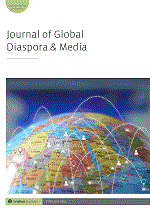
Full text loading...

Drawing on the highly mediatized arrival of migrants and refugees at the borders of Greece, this article focuses on digital technologies and smartphone use among Syrian refugees in Athens, Greece, and analyses the way family relations are experienced at a distance. It is based on ethnographic research carried out in the refugee camp of Eleonas, from July 2019 to March 2020, when the first wave of COVID-19 was confirmed in Greece. The main objective of the article is to discuss the way digital technologies help the refugees to redefine relationships among family members and experience a sense of ‘togetherness’ at a distance. In addition, it aims to describe the changes of the familial ties and the practices of an ‘imaginary family’ through smartphones and network platforms. Overcoming uncertainty, fear and ‘information precarity’ caused by the dataveillance and control of al-Assad’s governmental authorities, Syrian refugees find ways to use smartphone as ‘an essential tool’ to facilitate communication among family members and relatives in homeland or in diaspora in Europe, to share experiences, comments and pictures.

Article metrics loading...

Full text loading...
References


Publication Date:
https://doi.org/10.1386/gdm_00034_1 Published content will be available immediately after check-out or when it is released in case of a pre-order. Please make sure to be logged in to see all available purchase options.